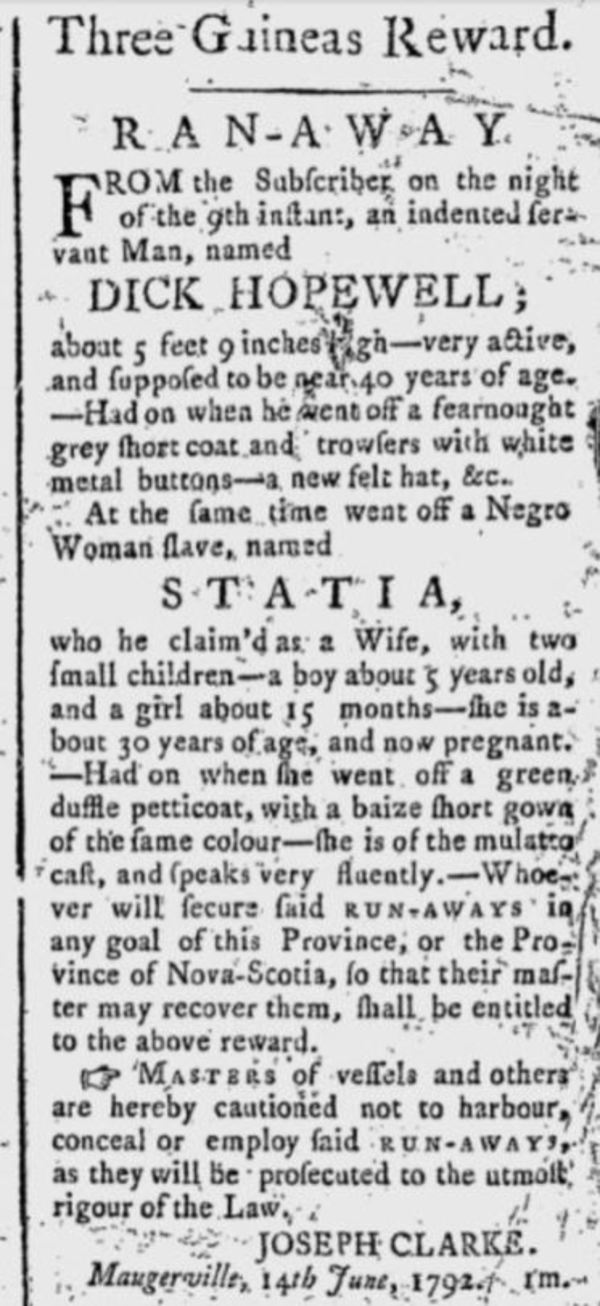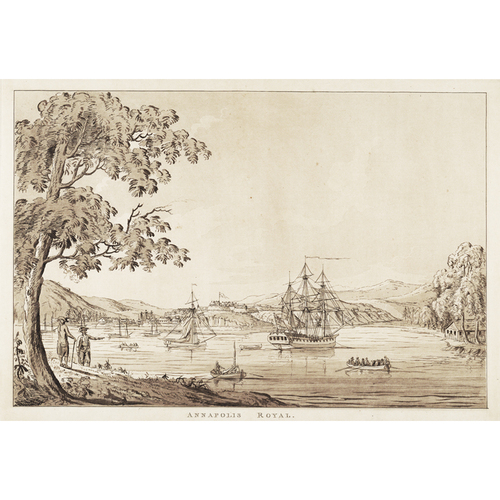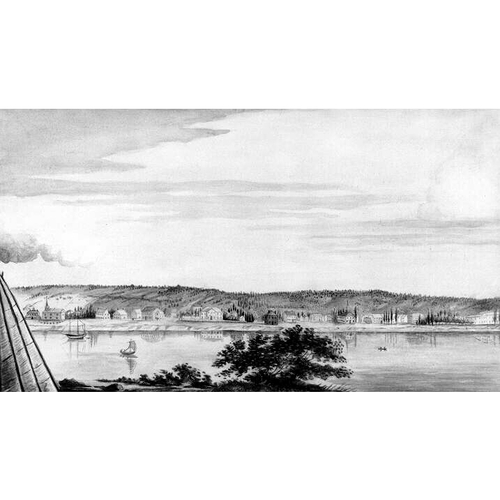
Source: Link
STATIA (Hopefield) (she may also have been known as Patience and Stach), enslaved Black woman; b. c. 1765 in New York; m. Richard Hopefield, possibly in the mid 1780s, and they had at least one son and one daughter; she may have had another son before meeting Hopefield; d. after 1805.
Statia and the documentary record
In 1805 an enslaved woman named Statia gave a deposition to secure the freedom of her son, Richard Hopefield Jr. This document, along with a 1792 runaway-slave advertisement and an entry in the “Book of Negroes,” compiled in 1783 by British military authorities, are the only surviving records of her existence. Such fragmentary evidence is common for enslaved people in colonial Canada. Often their names are unknown [see Name Unrecorded*], and for those whose identities can be determined, such as Diana Bestian* and Lydia Jackson*, the records that remain were generally created by white slave-holders or officials. In rare cases, such as Statia’s, documents reveal traces of an enslaved person’s life.
Statia was sold repeatedly throughout her life. According to her deposition, “she was born within His Majesty’s late Province of New York about eleven years prior to the American War … and was claimed as a Slave by Lewis Guyon of East Chester.” Statia’s early years would likely have been spent working on a farm and performing household duties. Sometime before the outbreak of hostilities, the young girl was purchased by Gabriel Fowler, who later brought her to New Brunswick. An entry in the “Book of Negroes” for an enslaved seventeen-year-old mother named Stach and her infant son, Joe, is probably a reference to Statia, evidence of her move north. Fowler proceeded to sell her to Dr Joseph Clarke of Maugerville. He in turn sold her to Phineas Lovett*, who owned property in Annapolis Royal, N.S., and traded extensively in New Brunswick. He purchased Statia despite the fact that she was married to Richard Hopefield, an indentured Black man, with whom she would have two children.
Finally free
Both Joseph Clarke and Phineas Lovett were slave owners who traded to buyers in the West Indies. Hopefield realized that Statia was destined for such a fate after she was taken on board a boat that was to transport her to a ship bound for the West Indies, and he petitioned Governor Sir Guy Carleton, requesting that she be freed. According to her deposition, Carleton ordered that she be “sent for on shore and re-delivered to her said Husband and told she was free and might go where she pleased within the King’s dominions.” After this development, as Statia would note, she “lived for seven years and upwards with her said Husband quietly and undisturbed and in the enjoyment of her liberty.” It would not last.
Statia’s re-enslavement
In her deposition, recorded by notary William Franklin Odell*, Statia described how, in the early 1790s, her former owner, Clarke, “seized upon her by violence” and re-enslaved her. Such brutality and capture were a constant risk for freed Black women and men in the Maritimes.
Statia and her husband soon plotted her escape and they fled on the night of 9 June 1792. Clarke, seemingly little concerned that he had re-enslaved a person previously released from servitude by the colony’s governor, placed a runaway notice in the Saint John Gazette (29 June 1792) in which Statia was described as about 30 years of age, “of the mulatto cast,” and able to speak “very fluently.” Hopefield, mistakenly named Hopewell in the advertisement, was noted to be “very active, and supposed to be near 40 years of age.” With Statia, who was pregnant at the time of her escape, were her five-year-old son and her daughter, then about 15 months old. How long the family eluded capture is unknown. Statia was eventually retaken and served Clarke for “upwards of two years” before he sold her to Joseph Hewlett. She was still enslaved to Hewlett when she filed her deposition 12 years later, in 1805.
Statia’s deposition
The deposition was part of Fredericton lawyer Samuel Denny Street*’s habeas corpus application to secure freedom of Statia’s son, Richard Hopefield Jr. The younger Hopefield was claimed by the loyalist Stair Agnew*, a slave owner, although it is unclear how or when he came to possess him. Agnew was defended by Ward Chipman*, who had previously represented the enslaved woman Nancy*. At the trial, Street argued that since Hopefield Sr was a free man, his son should be free as well. The effort failed, in part because the New Brunswick court agreed that Statia had not been officially or properly married to Richard Hopefield Sr.
There is no record of Statia after 1805. Joseph Hewlett died in 1822. His will does not mention her, and almost nothing is known about her life while she was in servitude to him. Joseph Clarke’s 1814 estate inventory is likewise silent about her fate. While a host of questions about her story remain unanswered, her deposition and the runaway-slave announcement testify to the struggles she and her family endured when they sought freedom during the colonial era in Canada’s Maritimes.
National Arch. (London), PRO 30/55/100, “Book of Negroes,” Stach (copy at N.S. Arch., archives.novascotia.ca/africanns/book-of-negroes/page/?ID=43&Name=Stach). PANB, RS42 (Supreme Court, case files), Hopefield v. Agnew, 1802–5, depositions of Patience and Richard Hopefield, July 1805; RS69 (Queens County, probate records), 1822, Joseph Hewlett (mfm. F10441); RS72 (Sunbury County, probate records), 1814, Joseph Clarke Sr (mfm. F9117). D. G. Bell, “Slavery and the judges of loyalist New Brunswick,” Univ. of New Brunswick Law Journal (Fredericton), 31 (1982): 9–42. D. G. Bell et al., “Slavery and slave law in the Maritimes,” in The African Canadian legal odyssey: historical essays (Toronto and Buffalo, N.Y., 2012), 363–420. H. A. Whitfield, Biographical dictionary of enslaved Black people in the Maritimes (Toronto, 2022); North to bondage: loyalist slavery in the Maritimes (Vancouver and Toronto, 2016).
Cite This Article
Harvey Amani Whitfield, “STATIA (Hopefield) (Patience, Stach),” in Dictionary of Canadian Biography, vol. 5, University of Toronto/Université Laval, 2003–, accessed April 15, 2025, https://www.biographi.ca/en/bio/statia_5E.html.
The citation above shows the format for footnotes and endnotes according to the Chicago manual of style (16th edition). Information to be used in other citation formats:
| Permalink: | https://www.biographi.ca/en/bio/statia_5E.html |
| Author of Article: | Harvey Amani Whitfield |
| Title of Article: | STATIA (Hopefield) (Patience, Stach) |
| Publication Name: | Dictionary of Canadian Biography, vol. 5 |
| Publisher: | University of Toronto/Université Laval |
| Year of revision: | 2024 |
| Access Date: | April 15, 2025 |





